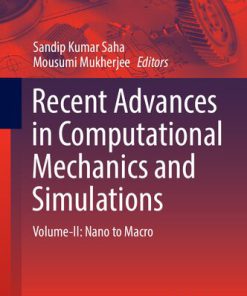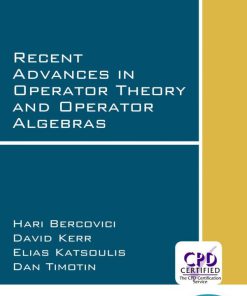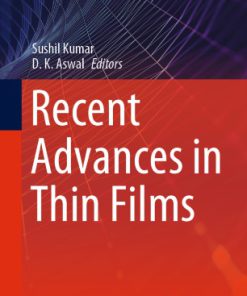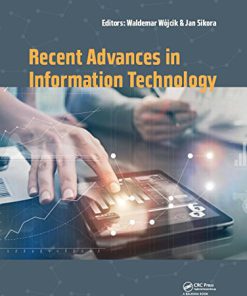Recent Advances in Celestial and Space Mechanics 1st Edition by Bernard Bonnard,Monique Chyba 3319274627 9783319274621
$50.00 Original price was: $50.00.$25.00Current price is: $25.00.
Recent Advances in Celestial and Space Mechanics 1st Edition by Bernard Bonnard,Monique Chyba – Ebook PDF Instant Download/Delivery:3319274627,9783319274621
Full download Recent Advances in Celestial and Space Mechanics 1st Edition after payment

Product details:
ISBN 10:3319274627
ISBN 13:9783319274621
Author:Bernard Bonnard,Monique Chyba
This book presents recent advances in space and celestial mechanics, with a focus on the N-body problem and astrodynamics, and explores the development and application of computational techniques in both areas. It highlights the design of space transfers with various modes of propulsion, like solar sailing and low-thrust transfers between libration point orbits, as well as a broad range of targets and applications, like rendezvous with near Earth objects. Additionally, it includes contributions on the non-integrability properties of the collinear three- and four-body problem, and on general conditions for the existence of stable, minimum energy configurations in the full N-body problem.
A valuable resource for physicists and mathematicians with research interests in celestial mechanics, astrodynamics and optimal control as applied to space transfers, as well as for professionals and companies in the industry.
Recent Advances in Celestial and Space Mechanics 1st Table of contents:
1 Introduction
2 The Colinear 3 Body Problem
2.1 Central Configurations
2.2 Non-integrability
2.3 Higher Variational Equations
3 The 4 Body Problem
3.1 Eigenvalue Bounding
3.2 Symmetric Central Configurations
3.3 Reduction of Exceptional Curves
3.4 Second Order Variational Equations
4 Higher Variational Equations
4.1 An Invariant Subspace of the 5-th Order Variational Equation
4.2 The Case {9,20}
5 The Planar n-Body Problem
6 Integrable n-Body Problems
6.1 An Integrable 5 Body Problem
6.2 An Integrable n+3 Body Problem
References
Relative Equilibria in the Full N-Body Problem with Applications to the Equal Mass Problem
1 Introduction
2 Fundamental Quantities and Specification of the Full N-Body Problem
2.1 Implicit Energy Dissipation Interaction Models
2.2 Density Distributions and Fundamental Quantities
2.3 Relative Reduction
2.4 Degrees of Freedom
2.5 Transformation into a Rotating System
2.6 Additional Integrals of Motion
3 Equilibrium and Stability Conditions
3.1 No Contact Case
3.2 Contact Case
4 Fundamental Quantities in the Full N-Body Problem
4.1 Rigid Body Expressions
4.2 Finite Density Sphere Restriction
4.3 Normalization
5 N=2
5.1 Equilibria and Stability
5.2 Hill Stability Conditions
6 N=3
6.1 Equilibria and Stability
6.2 Hill Stability Conditions
7 N=4
7.1 Equilibria and Stability
7.2 Static Rest Configurations
7.3 Mixed Equilibrium Configurations
7.4 Transitions Between Resting and Mixed Configurations
7.5 Compilation of Possible Relative Equilibria
7.6 Hill Stability Conditions
8 Summary
References
Station Keeping Strategies for a Solar Sail in the Solar System
1 Introduction
2 Dynamical Models
2.1 Restricted Three Body Problem for a Solar Sail
2.2 N-Body Problem for a Solar Sail
2.3 The Solar Sail
3 Background on the RTBPS
3.1 Equilibrium Points
3.2 Periodic Orbits
4 Station Keeping Strategy
4.1 Station Keeping in the RTBPS
4.2 Station Keeping in the NBPS
5 Mission Application
5.1 Mission Results
6 Conclusions
References
Minimum Fuel Round Trip from a L2 Earth-Moon Halo Orbit to Asteroid 2006 RH120
1 Introduction
2 Equations of Motion
3 Problem Statement
3.1 Approach Transfer
3.2 Return Transfer
3.3 Necessary Conditions for Optimality
3.4 Numerical Method
4 Numerical Results
4.1 Approach Transfer
4.2 Return Transfer from 2006 RH120 to L2
4.3 Complete Round Trip Mission
References
Low-Thrust Transfers Between Libration Point Orbits Without Explicit Use of Manifolds
1 Introduction
2 Problem Statement
2.1 Equations of Motion
2.2 Optimal Control Problem
2.3 Necessary Optimality Conditions
3 New Approach for Computing Low-Energy Transfers
3.1 Introduction
3.2 Three-Step Solution Method
4 Numerical Results
4.1 Orbits with Same Energy
4.2 Orbits with Different Energies
5 Conclusion
References
Time-Minimum Control of the Restricted Elliptic Three-Body Problem Applied to Space Transfer
1 Introduction
2 The Controlled Planar Elliptic Restricted Three-Body Problem
2.1 Controlled Equations of the Planar Circular Restricted Three-Body Problem
2.2 Controlled Equations of the Planar Elliptic Restricted Three-Body Problem
3 Controllability
4 Structure of the Optimal Control
4.1 Optimality Conditions
4.2 Singular Flow and Structure of Extremals
5 Application to Space Transfers
5.1 Numerical Methods
5.2 Numerical Computations
6 Conclusion
References
On Local Optima in Minimum Time Control of the Restricted Three-Body Problem
1 Introduction
2 Transfer from a GEO to L1
2.1 Fixed Initial Point on a GEO
2.2 Free Initial Point on a GEO
2.3 Cut Points
3 Transfer from a GEO to MO
3.1 Fixed Initial Point on a GEO
3.2 Free Initial Point on a GEO
3.3 Cut Points
3.4 Homotopy w.r.t r1
4 Conclusion
5 Tables for GEO to L1 Transfer Problem
6 Tables from GEO to MO Transfer Problem
7 Summary of the Cut Points on the GEO to L1 Transfer
8 Summary of the Cut Points on the GEO to MO Transfer
8.1 mathcalC1 Cut Points
8.2 mathcalC2 Cut Points
People also search for Recent Advances in Celestial and Space Mechanics 1st :
recent advances in astronomy
advancements in astronomy
a celestial sphere
a recent significant breakthrough in space exploration
celestial mechanics and dynamical astronomy
Tags:
Bernard Bonnard,Monique Chyba,Celestial,Mechanics,Space,Advances
You may also like…
Mathematics
Engineering
Business & Economics
Recent Advances in Information Technology 1st Edition Waldemar Wójcik
Medicine - Pharmacology
Chemistry - Analytical Chemistry
Recent Advances in Natural Products Analysis 1st Edition Seyed Mohammad Nabavi (Editor)












